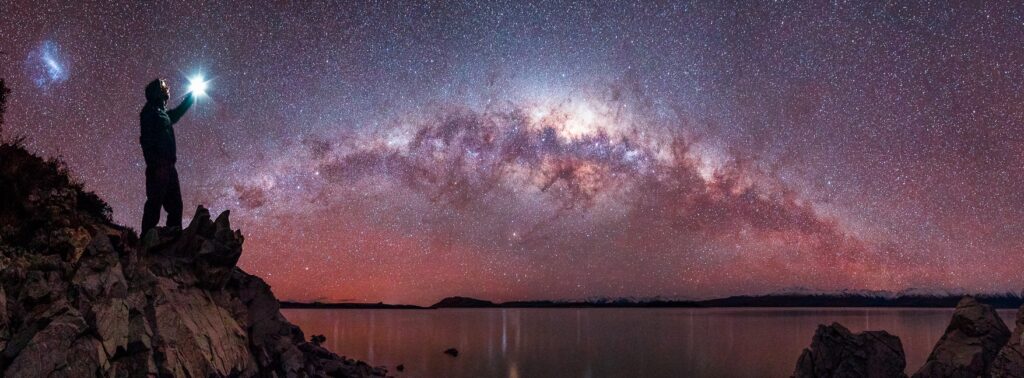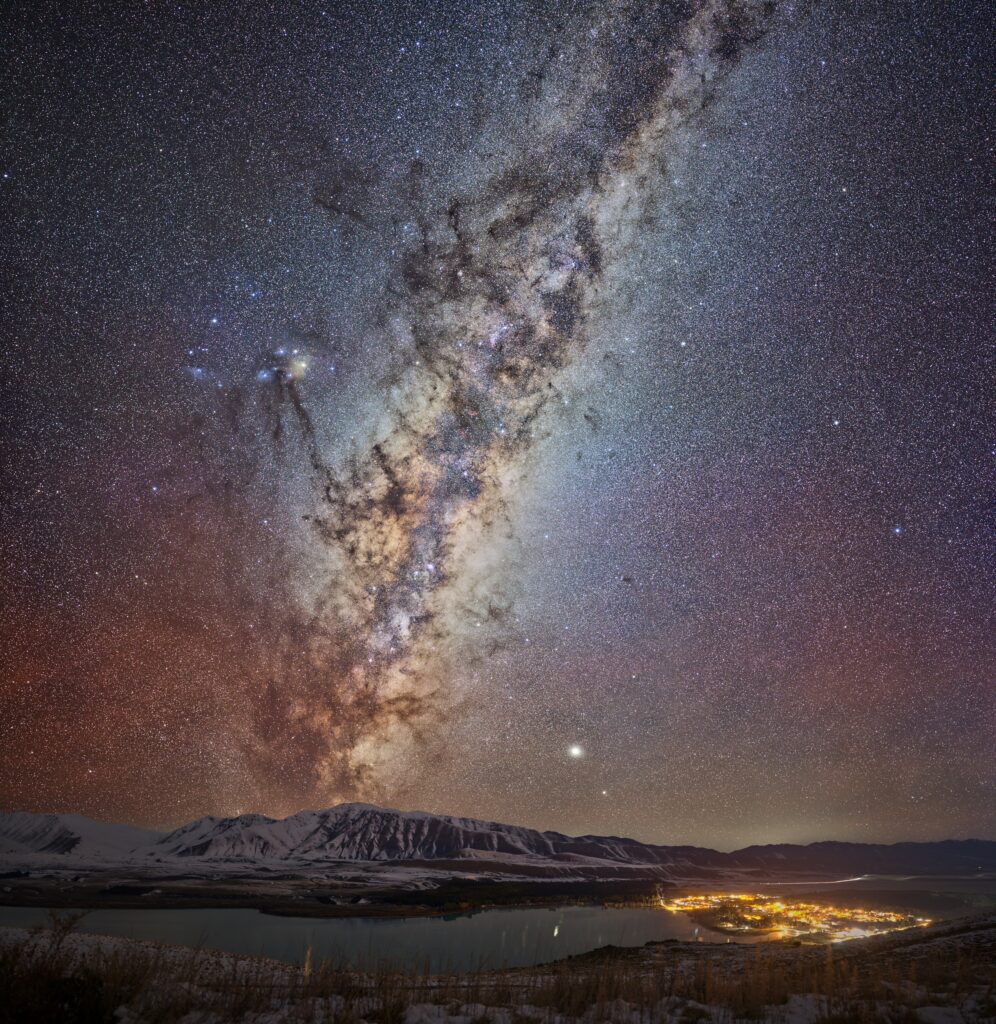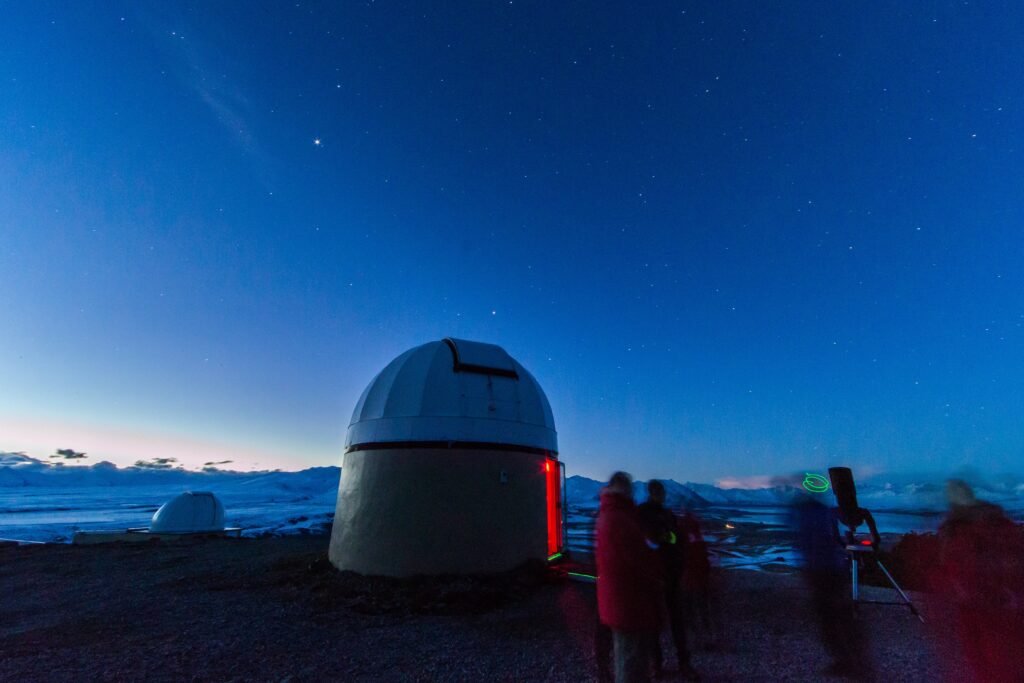Aoraki Mackenzie
International Dark Sky Reserve
The Aoraki Mackenzie International Dark Sky Reserve was created in June 2012, in recognition of the pristine skies of the Mackenzie which are essentially completely free of light pollution

Aoraki Mackenzie
The Aoraki Mackenzie International Dark Sky Reserve was created in June 2012, in recognition of the pristine skies of the Mackenzie which are essentially completely free of light pollution

It was recognized by the International Dark-Sky Association, following a detailed application made by the Aoraki Mackenzie Starlight Working Party. It’s formation was the first in the southern hemisphere and the first to be declared with gold tier status, the highest that can be accorded.
The reserve encompasses Aoraki/Mt. Cook National Park and the Mackenzie Basin, including the townships of Tekapo, Twizel and Mt Cook. It’s goals are to promote star-gazing and astrotourism, as well as to protect the astronomical research undertaken at Mt John Observatory, operated by the University of Canterbury. The research centre has four optical telescopes for observing variable and binary stars, for work on extrasolar planets, the Galactic Centre, the Magellanic Clouds, comets, near-Earth asteroids and the study of stellar spectra at high resolution. It is the world’s southernmost astronomical observatory, at 44 degrees south.

With a variety of astronomy and astrophotography tour operators based in Tekapo, you’ll find one suited for any age, agility and budget . Check out the options here, and make sure to book in advance!
The Matariki Mackenzie festival is held every winter, celebrating the rising of Matariki under the cloak of the world’s largest gold dark sky reserve. Join us for kai, culture and korero to reflect on the year that has passed, celebrate the present, and plan for the future.
Need further inspiration to simply pack your camera and head for Tekapo? Check out the star-gazing and astrophotography videos below >>